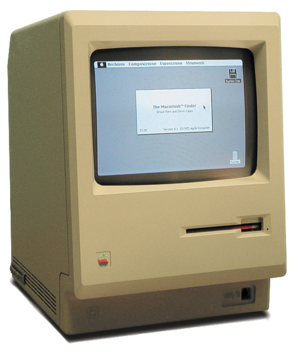Classic Mac OS

Introduction[edit | edit source]
| This wikibook contains characters (such as the Apple logo) that display only on Apple Macintosh computers. These characters will not appear on computers running Microsoft Windows. |
Property of: Apple
Latest Version: 9.2.2
Status: Ceased Development
The Apple Macintosh platform uses its own operating system known as Mac OS. Subsequent releases of the operating system have been denoted by appending the version number, such as Mac OS 9. With the advent of Mac OS X based on FreeBSD, previous versions have become known as Classic Mac OS and are no longer supported by Apple. Despite the lack of support, many systems running the Classic Mac OS are still in use today.
Graphical User Interface[edit | edit source]
Mac OS featured the first graphical user interface (GUI) on a mass produced computer. (Xerox produced the first GUI, but it did not enter production.) Many of the features of the original release of Mac OS are still implemented in modern operating systems, including:
- Icons
- Shortcuts
- Mouse usage
- Visual interactions (e.g. drag and drop)
- Windows, buttons and dialog boxes
- Boot directly into visual interface
- Cut-and-paste
The ability to interact graphically with the operating system significantly reduced the learning curve. Initially many doubted the viability of the Macintosh for business applications, as the GUI was a significant departure from console based terminals. This preconception was dispelled largely through the passage of time and the adoption of GUIs in several other operating systems.
Table of Contents[edit | edit source]
The Macintosh Interface
References[edit | edit source]
- Macworld Mac Secrets: 6th Edition, by David Pogue & Joseph Schorr. ISBN 0-7645-3415-7.